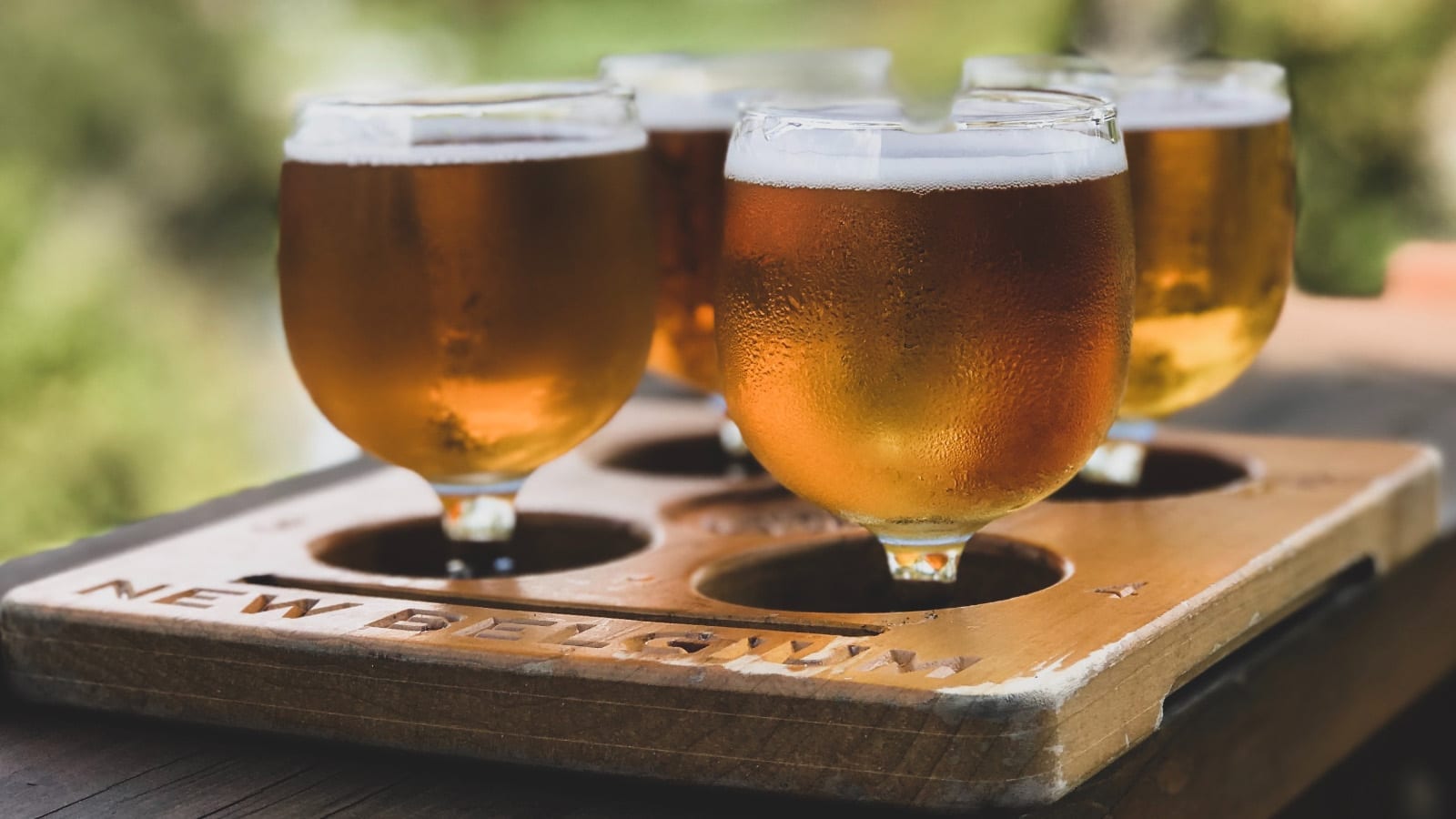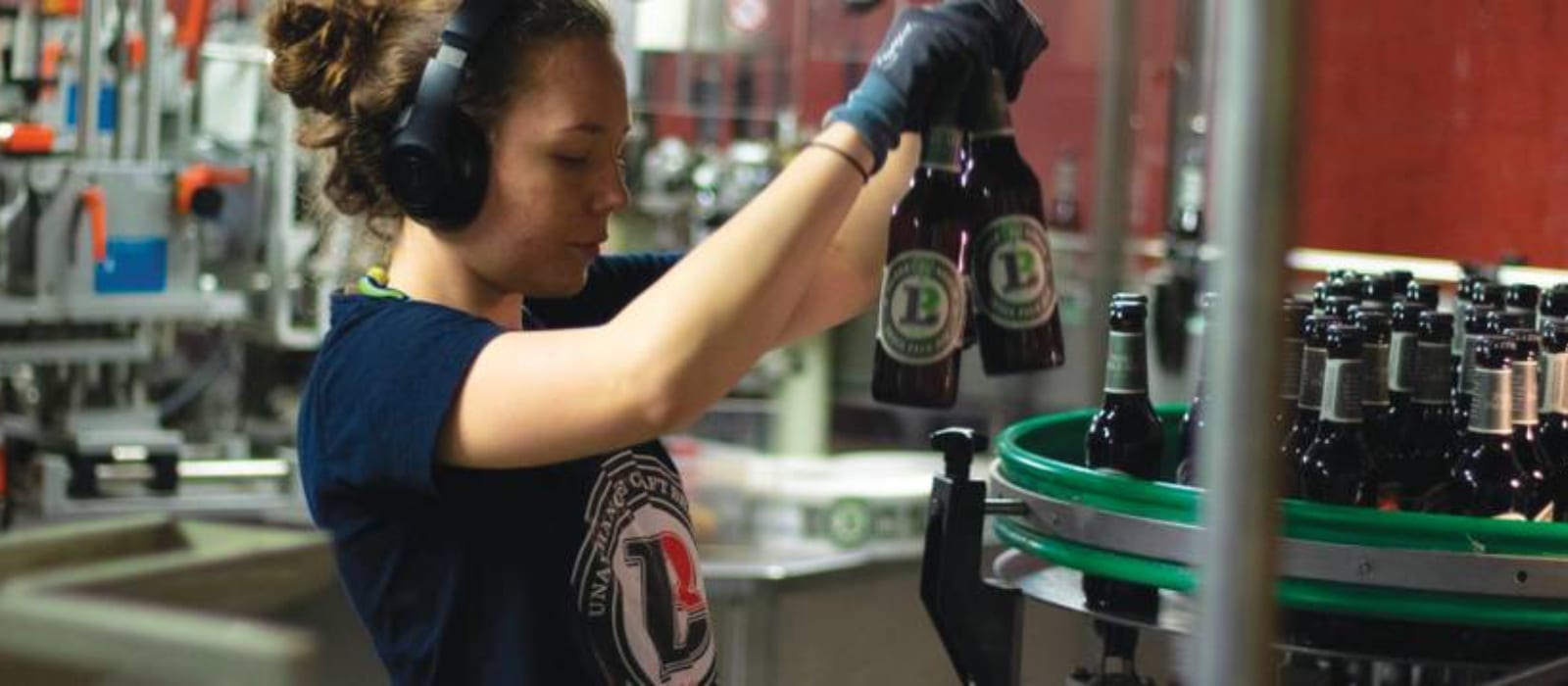Weisse up
Weisse up

Berlin. A destination at the top of every beer lover’s city break shopping list. Whatever stereotypes you’ve heard about the place, the one thing that’s definitely true is that the beer here is excellent, and it’s been excellent for a while. Hundreds of years of tradition give Germany it’s well-earned beer credentials, and while that’s an amazing thing for those of us who want to sample everything Berlin has to offer, for a new brewery to open and claim to offer better, even more delicious examples of great German beer, it takes a lot of courage. Luckily for Lemke, when they opened in 1999 – 21 years in German beer is nothing, remember – they didn’t just have courage. They had the beer to prove it.
Oli Lemke started Lemke brewery with the bold intention to create something new in Berlin. Inspired by the German brewpubs of the 1980s and influenced by the diversity of beer styles he saw elsewhere in the world, Oli decided Lemke was going to brew beer that Berlin hadn’t seen before.
“The idea was to show variety,” he says, explaining the beginnings of his brewery over the phone. “We were the first brewery that started brewing newer craft beer styles in Berlin. We started with a 2HL kit and with that made 40 different styles of beer in six months.”
This level of drive and enthusiasm was met with a little setback, however.
“The market just wasn’t ready for it,” Oli laughs. “People came back with their friends weeks after their previous visit expecting the same beers but they’d already gone, replaced by new experiments and different styles of beer.”
“I’d been building breweries in Japan and brought over their food concept to Lemke too… basically I did everything all at once and it just wasn’t working. We had to give up the food concept for a while, and slow down the testing of new beers, but with new trends in beer and food we’re moving away from German Brauhaus dishes and drinkers are more ready to try new things.”
“Basically, we were 20 years too early with our ideas!”
A lot of trial and error in the early years led to Lemke’s vast offering of beer styles, but Oli was eventually inspired by local historic brewing too. Berliner Weisse, Berlin’s tart wheat beer, was in decline throughout the 1980s and 90s, drank mostly by tourists and stocked mainly as a historical oddity. Many breweries closed, and it seemed that the style would simply die off.
A lot of trial and error in the early years led to Lemke’s vast offering of beer styles
“I never had any interest in Berliner Weisse to begin with,” Oli admits.
However, talking to Dr. Zepf of the world-renowned Doemens School in Bavaria changed Oli’s mind. Soon he was undertaking a revitalisation project of his own.
“The school educates brewmasters and beer sommeliers. Dr. Zepf asked me why I didn’t make a Berliner Weisse, and honestly, I’d just seen it as this one-dimensional sour beer.”
“Then an old friend of mine, a brewmaster who’s now in his 70s, spoke to me about his Berliner Weisse brewery that closed down in the 1980s. He had kept the organisms from his brewery in nitrogen and we thought, why doesn’t Lemke reinvent the Berliner Weisse?”
So, with the help of his brewmaster friend and their collection of microorganisms, the Lemke Berlinerweisse project began. Lemke Berliner Weisses are never mixed with syrups, as unlike traditional Berliner Weisses they are brewed on the ingredients they want to be flavoured by, such as oak, woodruff or raspberries. The Berliner Weisse that’s in this month’s box, Budike, is made with the original yeasts and lactobacteria used by Oli’s friend’s brewery right up until the 1980s. Why don’t you crack it open? The name itself comes from the Budike bars visited by poorer working class Berliners who would drink a small beer after work, another nod to the beer’s historic origin within Berlin.
“It’s interesting to know that in the 1980s – not that long ago! – brewers had really no idea what they were using to make their Berliner Weisse,” Oli says. “They used what they had in their tank and it happened. If it was bad, they borrowed from another brewery until they could get it right again.”

“Now we can work with labs and figure out exactly what microorganisms we have and their concentrations within our brew. We know that we took about 200 different microorganisms from old bottles and from our friend for research and to create our own unique Berliner Weisse. And we don’t harvest it – the concentrations change, the organisms grow. We start from scratch every time.”
Oli’s not the only one interested in the biological makeup of his beers. Students visit Lemke regularly as part of their studies.
“Students who enrol to become Brewmasters have to work on a paper, and I help those who want to work on a paper about Berliner Weisse: the microbiology, Brett strains, lactobacteria, top fermenting, how the microorganisms work together, their combinations. I’ve had six students come and study at Lemke so far, and one at the moment from Weiheinstephaner.”
So is Germany’s interest in Berliner Weisse peaking? Well, the short answer is… no.
“Berlin is probably the last to catch on to it!” Oli laughs. “The UK is the second biggest drinker of this style, and the US is first. You can’t compare Germany’s beer industry to the UK’s craft beer scene. I like the UK’s beer culture, it’s very diverse.”
“I find it very funny though that I’m sending an IPA over to you to drink. I’m giving you your own style of beer back. It’s hilarious to me!
Article source – Ferment
Come on In!
SUN - THURS
12:00pm - 11.00pm
FRIDAY
12:00pm - 11.30pm
Saturday
11:00am - 11:30pm
Last order 30 mins before closing
Contact US
Phone Us
07477 495 015
Email Us
Address
124, High Street, Rickmansworth,
Hertfordshire, WD3 1AB
